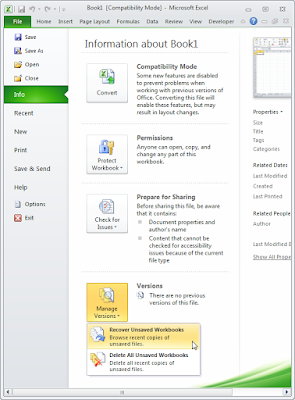 Harboring an ugly gray and decaying complexion, shuffling forward with an unworldly gate, with outstretched arms flailing and uttered chants of “Brains, Brains, must have Brains,” Apocalyptic Zombies trudge down the hallways of distributor sales offices. Brain hungry undead are scouring our buildings for prey.
Harboring an ugly gray and decaying complexion, shuffling forward with an unworldly gate, with outstretched arms flailing and uttered chants of “Brains, Brains, must have Brains,” Apocalyptic Zombies trudge down the hallways of distributor sales offices. Brain hungry undead are scouring our buildings for prey. Surviving on gory morsels of mental morrow called common sense, ever present Zombies have circled the sales group and stand ready to make mincemeat of your team. Unwarily, your salespeople stand in line to “feed” the monsters. They are easy prey. What’s worse, they may not even realize the damage has been done.
Allow me to be your post-apocalyptic tour guide as we look for signs of devastation and learn the proper methods destroying the brain hungry beasts.
Searching for telltale clues to zombie infestation requires a quick eye. Sometimes you have to read between the lines to really understand the extent of the carnage. First, let’s explore the situation with a couple of elementary deductions. You’re an Electrical Distributor, selling products is stock and trade. Along the past few years, you’ve built a value proposition. You don’t just sell products, you sell service and solutions. If you think of yourself as the low service, low price option, I suggest you save yourself about 4 minutes and jump to the last couple of paragraphs. Everyone else, join me as we look at four important clues.
Clue Number One – Salespeople Don’t Really Understand Customers
Job one for solutions-based salespeople is matching products to customer need. A sales guy assigned to an important account should understand basic drivers within the customer organization. The real list would be too lengthy for this discussion, but to give you an idea, here’s a short list:
• How does the customer really make money? For example, does a contractor customer make the bulk of their money on projects or time and material jobs? If the customer is an end user, what is their most important product?
• Is the customer’s organization a private company or part of a larger organization? This matters, especially if you can get information on what’s going on in other parts of the country by way of supply-partners.
• What does internal labor cost the customer? Burdened labor, the cost of keeping a person in the field or the costs of safety equipment associated with each employee is critical information.
• Has the customer identified rejects, scrap or other waste in their system? Assisting in solving issues means understanding precisely how they are measured and being improved.
• Are there critical resources, raw materials or other economic drivers impacting the customer? The cost of energy impacts lots of folks. Precious metals, plastics, Ag commodities and a long list of other items can impact the customer’s think position. A good distributor can help, as long as they know the real situation.
A reasonable person would be building on this list in order to better position the solutions proposed by their company. A thinking person would systematically store this data to share with distributor specialists, trusted supply-partners and others capable of assisting in the sales effort. The trouble is most salespeople don’t. Could it be the result of a late night encounter with a hoard of zombies?
Clue Number Two – Salespeople Don’t Understand the Value of their Work
Ask a “zombie-struck” salesperson to talk about the value of their work and there’s a good chance they will talk about sales growth, commission checks and compensation plans. While these are pertinent, they’re really the byproduct of the real value.
The most important value in their work comes from what they do for customers. Salespeople can talk about value-added efforts for hours. Stories of superhuman customer service flow from their lips. When asked how these really impact the customer’s business, most start waving their hands and get suddenly vague.
The majority of our sellers deliver really strong value to their customers. However, most sellers use a one-size-fits-all approach to customer value. Providing services (that cost them and their employer a fortune) without really understanding the economics can create a massive drain on a distributor’s bottom-line.
As we researched for The Distributors Fee-Based Manifesto, we saw the results of salespeople giving way millions of dollars in free service. Far too often we saw customers with limited or no potential walk away with services their purchases would never justify. To illustrate the extent of the zombie carnage, in many instances sellers have gone “underground” with their activities while hiding the size and quantity from their management teams. Clearly, they know their commitments make little economic sense, yet they still sacrifice company profits for the easy sale. Could a portion of their brain have become a between meal snack for a hungry zombie?
Clue Number Three – Salespeople are Not Calling on the Right People
If brain munching monsters hadn’t been feeding on their minds, salespeople would strive to “cover all the bases” at their accounts. For Electrical wholesalers calling on industrial plants, this means not just calling on purchasing, maintenance and engineering. The sale of our products requires attention in the plant production, the planning department, safety groups and even top level management. The same can be said for contractors and other kinds of accounts. Department names are different but the concept is the same; you’ve got to call on Mr. Big.
 To illustrate the point, I got called into a situation where a client thought they were going to lose a million dollar account to a competitor offering a fancy supply contract deal. The competitor had pitched the plan to a corporate Vice-President and was about to scoop the business. The salesperson (we’ll call him Barry,) a guy with 25+ years of experience, joined me and his management team in a Monday afternoon brainstorming session to save this important piece of business. He showed all the signs of zombie damage.
To illustrate the point, I got called into a situation where a client thought they were going to lose a million dollar account to a competitor offering a fancy supply contract deal. The competitor had pitched the plan to a corporate Vice-President and was about to scoop the business. The salesperson (we’ll call him Barry,) a guy with 25+ years of experience, joined me and his management team in a Monday afternoon brainstorming session to save this important piece of business. He showed all the signs of zombie damage.Over the years, Barry had done much to build a relationship with the maintenance team. He helped maintain their inventory, he did regular training sessions, helped troubleshoot and regularly rolled up his sleeves to solve tough problems. Over the 15 years of calling on the account, Barry had done nearly everything right except for one critical point. Barry had never bothered to meet anyone higher up than the storeroom manager. To make matters worse, he had stiff armed his management team’s efforts to build a relationship with the customer’s Mahogany Row folks. Due primarily to this lack of any top level connection, my client spent the next year hustling to maintain a fraction of the account.
It’s neither rocket science nor a new idea. No customer should exist via a single connection. Salespeople must establish a working relationship with everyone critical to the keeping the customer moving forward. The financial guy is probably the most critical.
If Barry’s brains hadn’t been a snack for some undead, he would have reasoned, “This company writes me a check for $100,000 a month. Wouldn’t it be nice if the financial guys knew what I looked like?”
Clue Number Four – Salespeople Who Fail to Build Personal Strategic Plans
This one is easy to spot. Zombiefied salespeople get into routines. To the bitten brain, 2017 will be an extension of 2016. Their formal plan is to somehow magically grow their business through a combination of good luck, deeper customer friendships and fairy dust. When asked if their territory will grow in the coming year, the answer is often based more on management wish lists than their own strategy.
Wouldn’t it be better to have a plan which follows the “who, what, why” approach to sales planning. For those of you who are unfamiliar with the “who, what, why” concept allow me to lay it out.
• Who will provide growth in the coming year? What specific accounts who are poised to grow during the coming year? A salesperson should know enough about their customers’ business to understand how economic conditions will most likely impact them.
• What products or projects will drive the growth? Growth comes from product lines. Understanding which product lines will drive growth allows the sales guy the opportunity to position with supply partners, get necessary pricing agreements, block competition and position themselves with the customer’s upper management.
• Why will the account grow? Check out my points in Clue Number One. Is the account growing because they received the commitment for a very large project? Is a new product picking up momentum and calling for expansion? Was a portion of the plant due for an upgrade? All of these are obviously important throughout the selling process.
Zombies are a Danger Even if You Are a Low/No Service Discount Shop
Hopefully, our four tell-tale clues have provided benefit for distributors selling solutions and customer value. But at the beginning of this article, we promised the other folks (Low/No Service Discount Wholesalers) something to ponder if they jumped over down to this point. Here it is…
 It only takes a couple of episodes of the zombie show on TV or just about any zombie movie to realize their bites bites are contagious. Without special care, dumb decisions multiply. The best prevention is ongoing management direction. In a post-Apocalyptic (post-Recessionary) world, we can’t leave them alone and let them sell. According to data presented in The Challenger Sale the difference between the average and top salesperson is growing at breakneck speed. The use of team selling with specialists, application experts and high level customer service resources drives the cost of sale higher. Management must document and measure sales effectiveness and cure the zombie bitten.
It only takes a couple of episodes of the zombie show on TV or just about any zombie movie to realize their bites bites are contagious. Without special care, dumb decisions multiply. The best prevention is ongoing management direction. In a post-Apocalyptic (post-Recessionary) world, we can’t leave them alone and let them sell. According to data presented in The Challenger Sale the difference between the average and top salesperson is growing at breakneck speed. The use of team selling with specialists, application experts and high level customer service resources drives the cost of sale higher. Management must document and measure sales effectiveness and cure the zombie bitten.Be safe out there...















